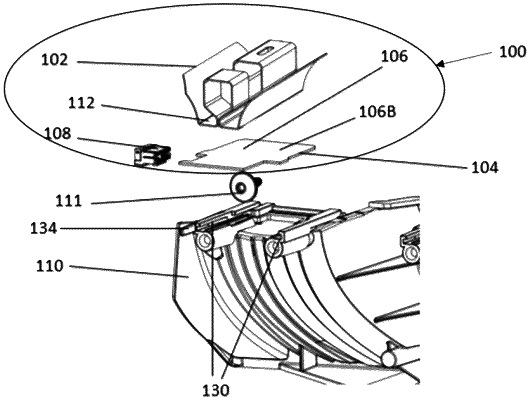| CPC F21V 29/745 (2015.01) [F21V 29/503 (2015.01); F21V 29/60 (2015.01); H05K 1/0203 (2013.01); H05K 7/20145 (2013.01); F21V 19/0015 (2013.01); F21Y 2115/10 (2016.08)] | 9 Claims |

|
1. A lighting module, comprising:
a printed circuit board (PCB) board having a front surface, a back surface, and peripheral edges of the board material;
a light source, wherein the light source is attached to the front surface of the PCB board;
a heatsink, wherein the heatsink is a surface mount device attached to the back surface of the PCB board, and wherein the heatsink is shaped and configured to dissipate the heat generated by the light source, wherein the heatsink is a stamped metal heatsink, wherein the heatsink is made by folding a metal sheet into a finned structure, wherein the fins themselves are folded to make the heatsink with a plurality of air flow passages,
wherein,
the heatsink comprises a base conducting portion, side fins, and a center structure, wherein the center structure comprises a top portion and sidewalls forming a hollow channel, wherein the hollow channel comprises a front opening and a rear opening, wherein the top portion of the center structure is enabled with an aperture in the metal, wherein the base conducting portion is attached on the back surface of the PCB board, wherein the side fins extending away from the base portion in such a way that the distance between the fins and the center structure vary as they extend away from the base portion, wherein air passages are formed between the center structure and the side fins and the warm air near the base conducting portion rises due to natural convection buoyancy, in which vertical narrowing passages result in the passive air flow increasing in velocity as it travels near the narrowing heat dissipating surface area of the heatsink improving heat transfer, and subsequently as the side fins and center structure air passages widen, the air velocity reduces as the warm air is distributed above heatsink.
|